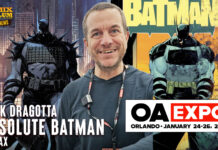As the camera soars above, capturing the world from an eagle’s perspective, the story of your favorite movie unfolds in a new light. High-angle shots are a powerful tool in any filmmaker’s arsenal, and these shots have the potential to dramatically alter a movie’s narrative.
How can high-angle shots impact a movie? They have the power to influence your emotions as a viewer or provide additional context to the story. Let’s take a moment to understand the magic behind high-angle cinematography.
Establishing a Character’s Vulnerability
High-angle shots have the power to make a character appear vulnerable or helpless, which impacts the audience’s emotional connection with the story. The cinematographer positions the camera above the character to make them seem smaller and weaker in the frame.
Famous Use:
In Steven Spielberg’s Jurassic Park, high-angle shots depict the extraordinary smallness of the human characters when they encounter the dinosaurs for the first time. The humans are dwarfed in comparison, emphasizing their helplessness in the face of these prehistoric giants.
Creating a Sense of Disorientation
Shooting from a high angle can also create a sense of unsettlement or unease, which adds tension and thrill to the narrative. Filmmakers use different camera angles to connect audiences with their work by pulling them into the story and making them feel the same emotions as the characters.
Famous Use:
Alfred Hitchcock used high-angle shots in his iconic film Vertigo to visually represent the protagonist’s fear of heights. The camera lends the audience a sense of the dizzying drops below him and instills that same sense of vertigo.
Providing a Comprehensive View
High-angle shots are also frequently used for practical reasons, like showing the audience the whole scope of a scene. This bird’s-eye view allows viewers to understand the full context of what’s happening.
Famous Use:
Remember the Battle of Helm’s Deep in Peter Jackson’s The Lord of the Rings: The Two Towers? High-angle shots provide a full view of the battlefield, enabling viewers to grasp the scale and intensity of the conflict.
Communicating a Character’s Fear
Audiences can also get a sense of a character’s feelings of fear or intimidation when they view the scene from a high angle. By positioning the camera above the character, the director can visually represent how small and weak that character feels.
Famous Use:
In the iconic film The Shining, Stanley Kubrick masterfully uses high-angle shots in the scene where Danny rides his tricycle through the empty corridors of the Overlook Hotel. The position of the camera emphasizes his smallness and vulnerability in the eerie hotel, amplifying the sense of impending doom.
A director’s skillful use of high-angle shots can impact their movie in lasting ways. They shape the story, evoke emotional responses, and create an unforgettable film experience. The magic of cinema often comes from above!































